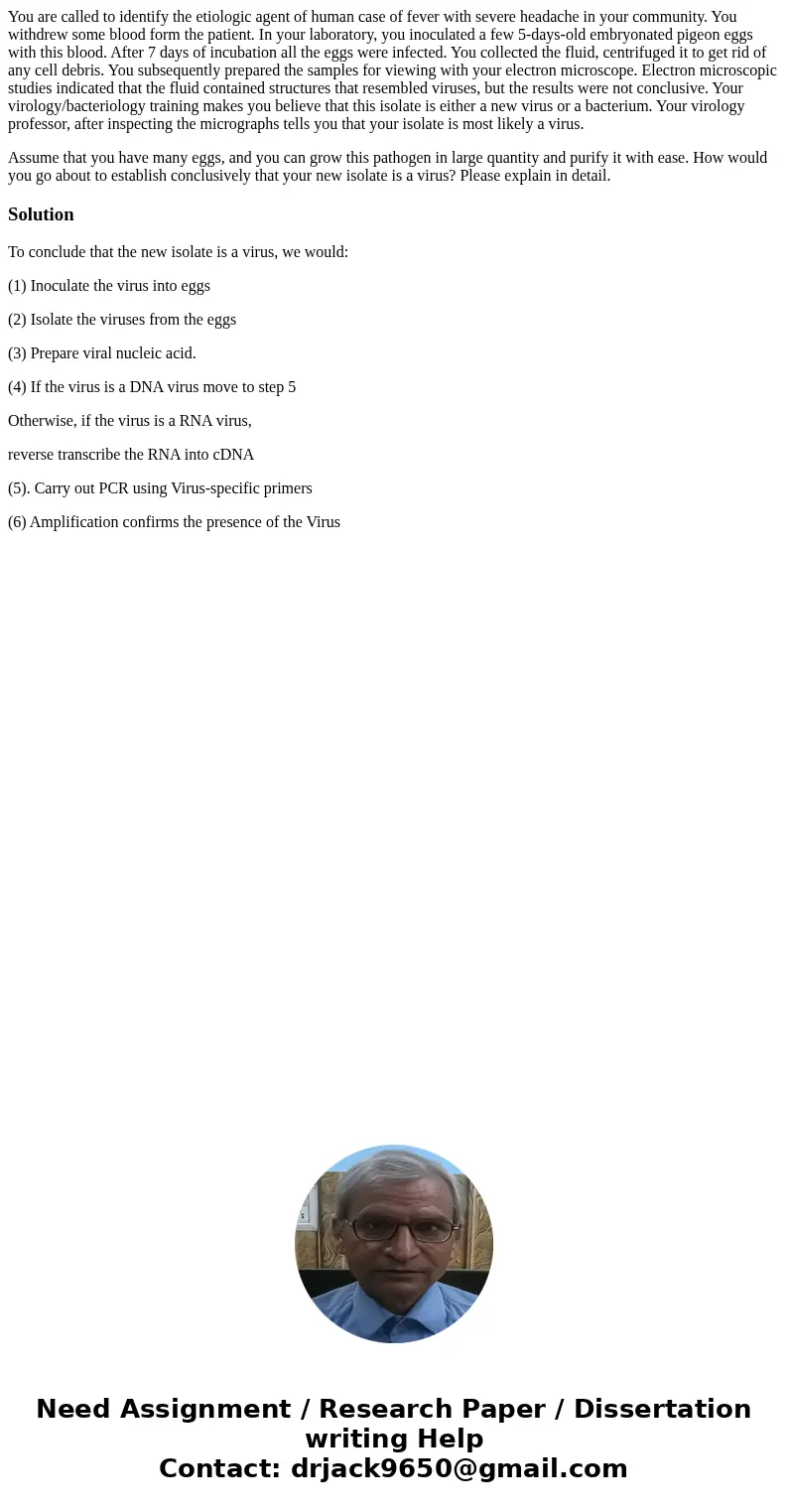You are called to identify the etiologic agent of human case
You are called to identify the etiologic agent of human case of fever with severe headache in your community. You withdrew some blood form the patient. In your laboratory, you inoculated a few 5-days-old embryonated pigeon eggs with this blood. After 7 days of incubation all the eggs were infected. You collected the fluid, centrifuged it to get rid of any cell debris. You subsequently prepared the samples for viewing with your electron microscope. Electron microscopic studies indicated that the fluid contained structures that resembled viruses, but the results were not conclusive. Your virology/bacteriology training makes you believe that this isolate is either a new virus or a bacterium. Your virology professor, after inspecting the micrographs tells you that your isolate is most likely a virus.
Assume that you have many eggs, and you can grow this pathogen in large quantity and purify it with ease. How would you go about to establish conclusively that your new isolate is a virus? Please explain in detail.
Solution
To conclude that the new isolate is a virus, we would:
(1) Inoculate the virus into eggs
(2) Isolate the viruses from the eggs
(3) Prepare viral nucleic acid.
(4) If the virus is a DNA virus move to step 5
Otherwise, if the virus is a RNA virus,
reverse transcribe the RNA into cDNA
(5). Carry out PCR using Virus-specific primers
(6) Amplification confirms the presence of the Virus

 Homework Sourse
Homework Sourse